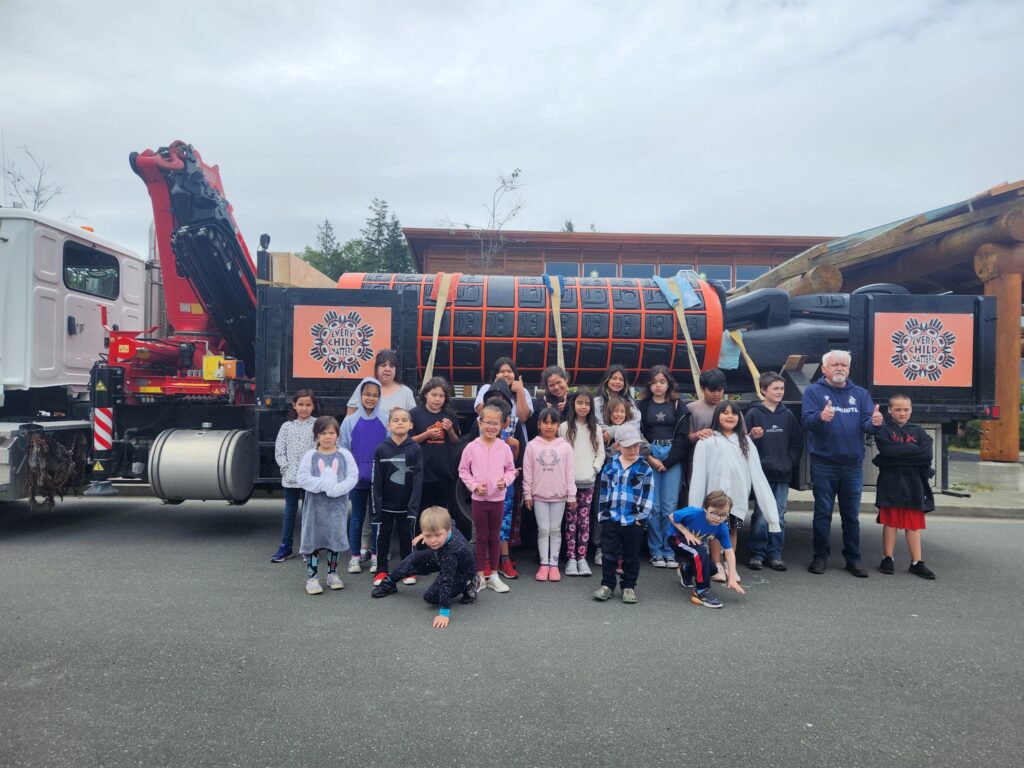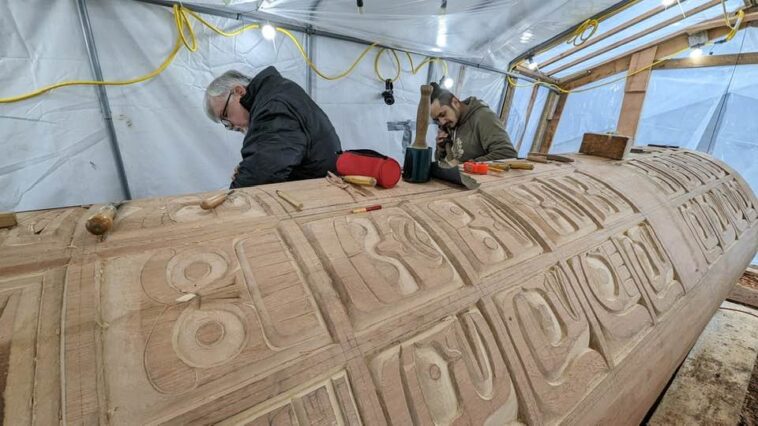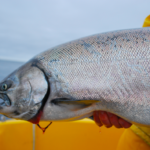A memorial pole dedicated to honouring the victims of residential schools is embarking on a powerful journey across Vancouver Island this June as part of National Indigenous History Month in Canada.
The pole, crafted by Kwakiutl Master Carver Stan Hunt of Port Hardy, aims to raise awareness about the painful legacy of residential schools and lead to dialogue and healing among coastal communities.
“I have so much respect for what you have done and the meaning behind it. It was an honour to meet you and share some time together. Gilakasla my new friends. Have a safe journey.”
Cory Cliffe, on Facebook.

Source: Indian Residential School Memorial Monument on Facebook.
“It’s really hard to see because the way it’s painted all black, that’s how I lived in a residential school. All in dark corners.”
Vern Flanders, residential school survivor.
Hunt dedicated years to bringing the memorial pole to life. He says he painted the pole black to reflect the profound grief endured by Indigenous children, particularly in light of the discovery two summers ago of 215 unmarked graves at the former residential school site in Tk’emlups near Kamloops.
“I hope we don’t just find them. I hope every one of them had a name. As we go, we keep gathering all this love, all of this strength and all this power, all this love from people,” Hunt told CHEK News.
Residential school survivor Vern Flanders was in Campbell River to see the memorial pole. “It’s really hard to see,” said Flanders to the news network. “Because the way it’s painted all black, that’s how I lived in a residential school. All in dark corners.”

Source: Indian Residential School Memorial Monument on Facebook.
The pole will travel to Victoria on June 20th and finally be brought to Vancouver by the Canadian Coast Guard on June 21st for National Indigenous People’s Day.
You can follow the memorial pole’s journey via the Indian Residential School Memorial Monument Facebook page. “Our beautiful southern relations honored us with song, dance, gifts, and strength for our journey. You touched all our hearts, and we will never forget your welcome, love, and stories,” the group shared after the stop in Campbell River this past weekend.
Locals like Cory Cliffe posted on Facebook: “I have so much respect for what you have done and the meaning behind it. It was an honour to meet you and share some time together. Gilakasla my new friends. Have a safe journey.”

Source: Indian Residential School Memorial Monument on Facebook.
“Beautiful! You filled our hearts and souls with love and good medicine to carry on with the journey,” wrote Dot Hunt.
Learn more about National Indigenous History Month in Canada and National Indigenous People’s Day here.






